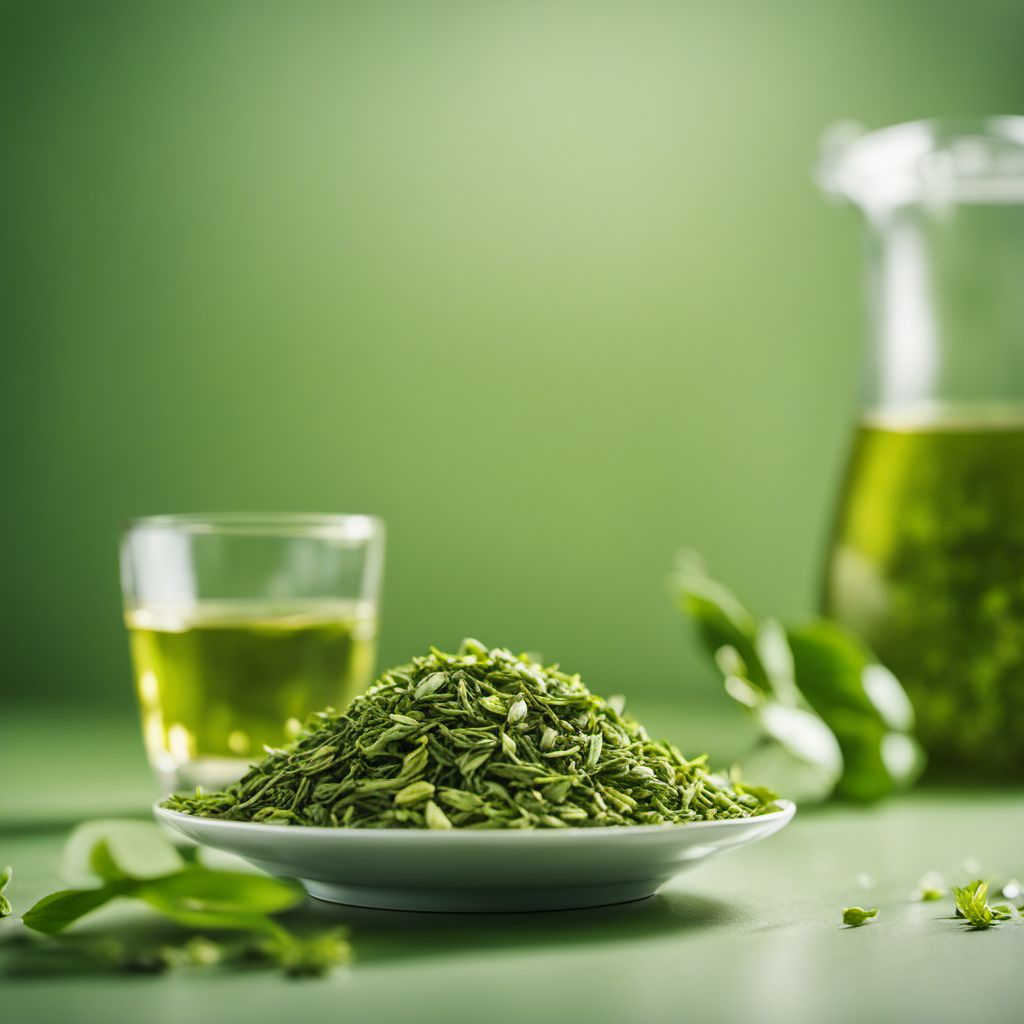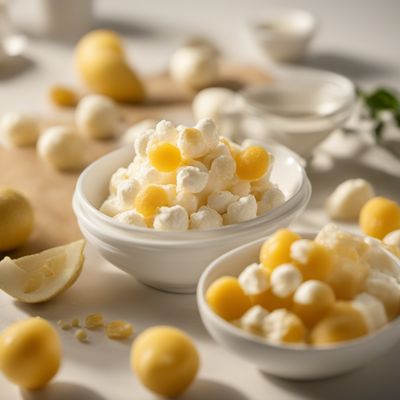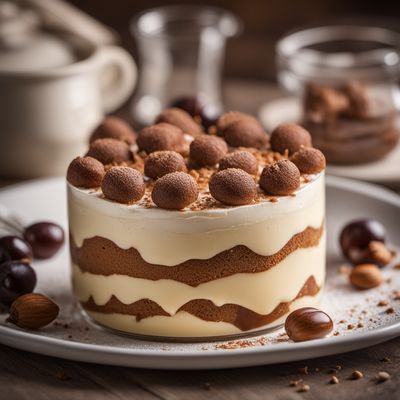
Ingredient
Green tea flavour
The Elixir of Serenity
Green tea flavor is characterized by its fresh and grassy notes, with a hint of natural sweetness. It is often described as earthy and slightly bitter, but not overpowering. The flavor profile of green tea adds depth and complexity to dishes, enhancing their overall taste.
Origins and history
Green tea has a rich history that dates back thousands of years, originating in China and later spreading to Japan and other parts of Asia. It has been an integral part of traditional tea ceremonies and is deeply rooted in Asian cultures. Green tea is made from the leaves of the Camellia sinensis plant, which undergo minimal oxidation during processing, preserving its vibrant green color and unique flavor profile.
Nutritional information
Green tea is a natural source of antioxidants, particularly catechins, which have been linked to various health benefits. It also contains caffeine, albeit in smaller amounts compared to coffee or black tea. Additionally, green tea is calorie-free, making it a popular choice for those watching their calorie intake.
Allergens
There are no known allergens associated with green tea flavor.
How to select
When selecting green tea flavor, opt for high-quality products made from real green tea leaves. Look for reputable brands that use natural ingredients and avoid artificial additives or flavors. Consider the intended use of the flavor, as some products may be more suitable for baking or beverages.
Storage recommendations
To maintain the freshness and quality of green tea flavor, store it in a cool, dark place away from direct sunlight and strong odors. Sealed containers or resealable bags are ideal for preserving its aroma. Avoid storing green tea flavor in the refrigerator, as it can absorb moisture and odors.
How to produce
Green tea can be produced by steeping green tea leaves in hot water or by using green tea powder, also known as matcha. Both methods require careful attention to temperature and steeping time to achieve the desired flavor profile. Green tea plants can also be grown in home gardens or pots, provided they receive adequate sunlight and water.
Preparation tips
Green tea flavor can be used in a variety of ways, such as infusing it into desserts like ice cream, cakes, and cookies. It can also be added to beverages, such as smoothies, cocktails, or hot tea. In savory dishes, green tea flavor can be used to marinate meats, flavor sauces, or enhance the taste of soups and stews.
Culinary uses
Green tea flavor is commonly used in Asian cuisines, particularly in Japan and China. It is a key ingredient in traditional Japanese tea ceremonies and is often incorporated into desserts, confections, and savory dishes. It has also gained popularity in Western cuisines, where it is used in a variety of sweet and savory creations.
Availability
Green tea flavor is widely available in countries where green tea is cultivated, such as China, Japan, and India. It can also be found in specialty stores or online retailers that offer a wide range of culinary ingredients.
More ingredients from this category » Browse all

Quark flavour
The Creamy Delight: Exploring the Flavors of Quark

Ginseng flavour
"The Energizing Essence: Unveiling the Enigmatic Ginseng Flavour"

Orange flavour
The Essence of Citrus

Blood orange flavour
Tangy Citrus Delight: Unleashing the Vibrant Essence of Blood Orange Flavor

Tiramisu' flavour
The Irresistible Essence of Tiramisu'

Butter flavour
"The Essence of Creamy Indulgence: Unveiling the Magic of Butter Flavour"

Cucumber flavour
"Cool and Refreshing: Exploring the Delicate Essence of Cucumber Flavor"

Muscat grapes flavour
The Enchanting Essence of Muscat Grapes

Watermelon flavour
The Refreshing Essence: Unlocking the Delightful Watermelon Flavor

Blue cheese flavour
The Bold and Tangy Indulgence

Hibyscus flavour
"The Vibrant Essence: Exploring the Delightful Hibiscus Flavor"

Brandy orange flavour
The Essence of Citrus Elegance